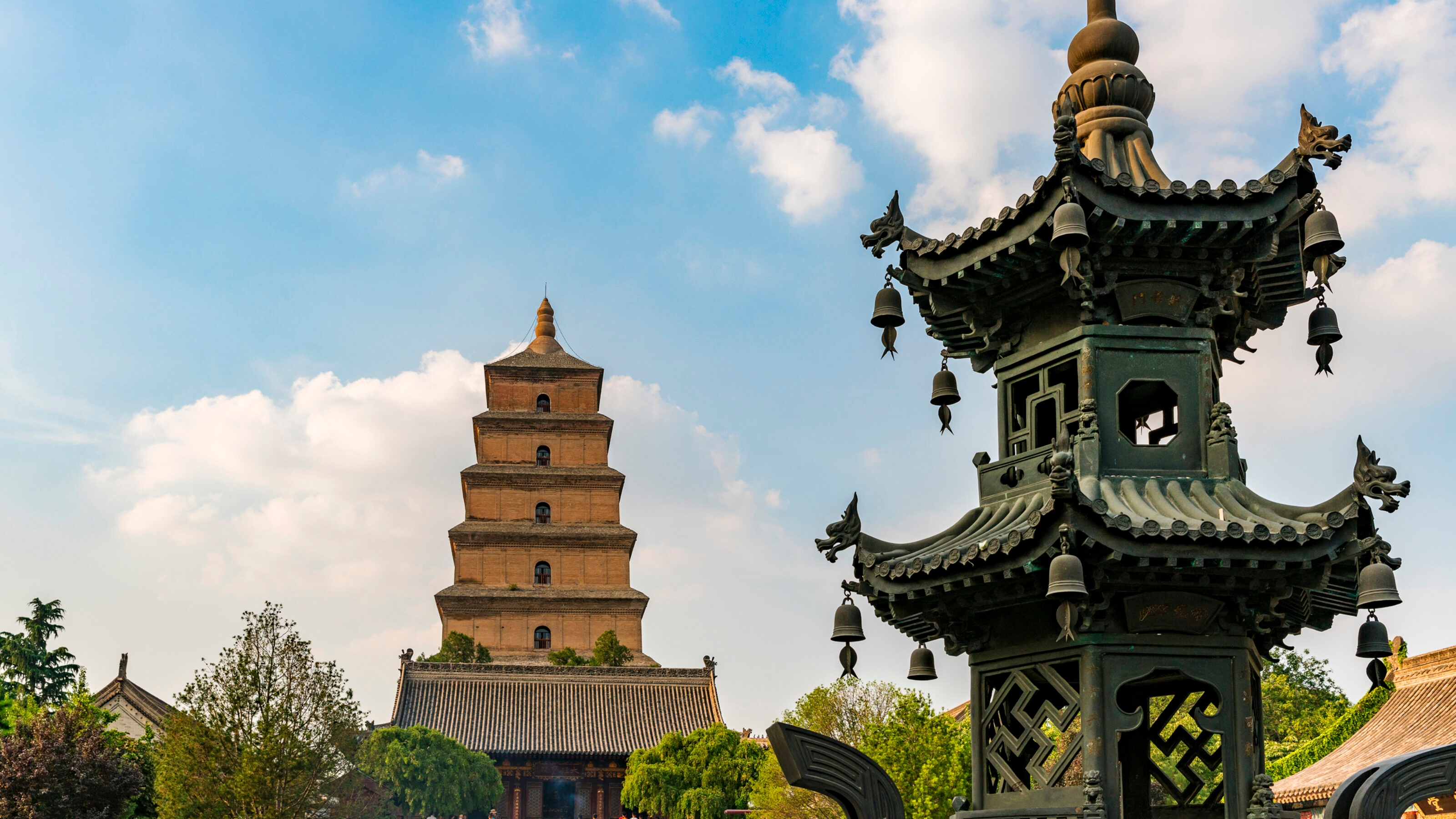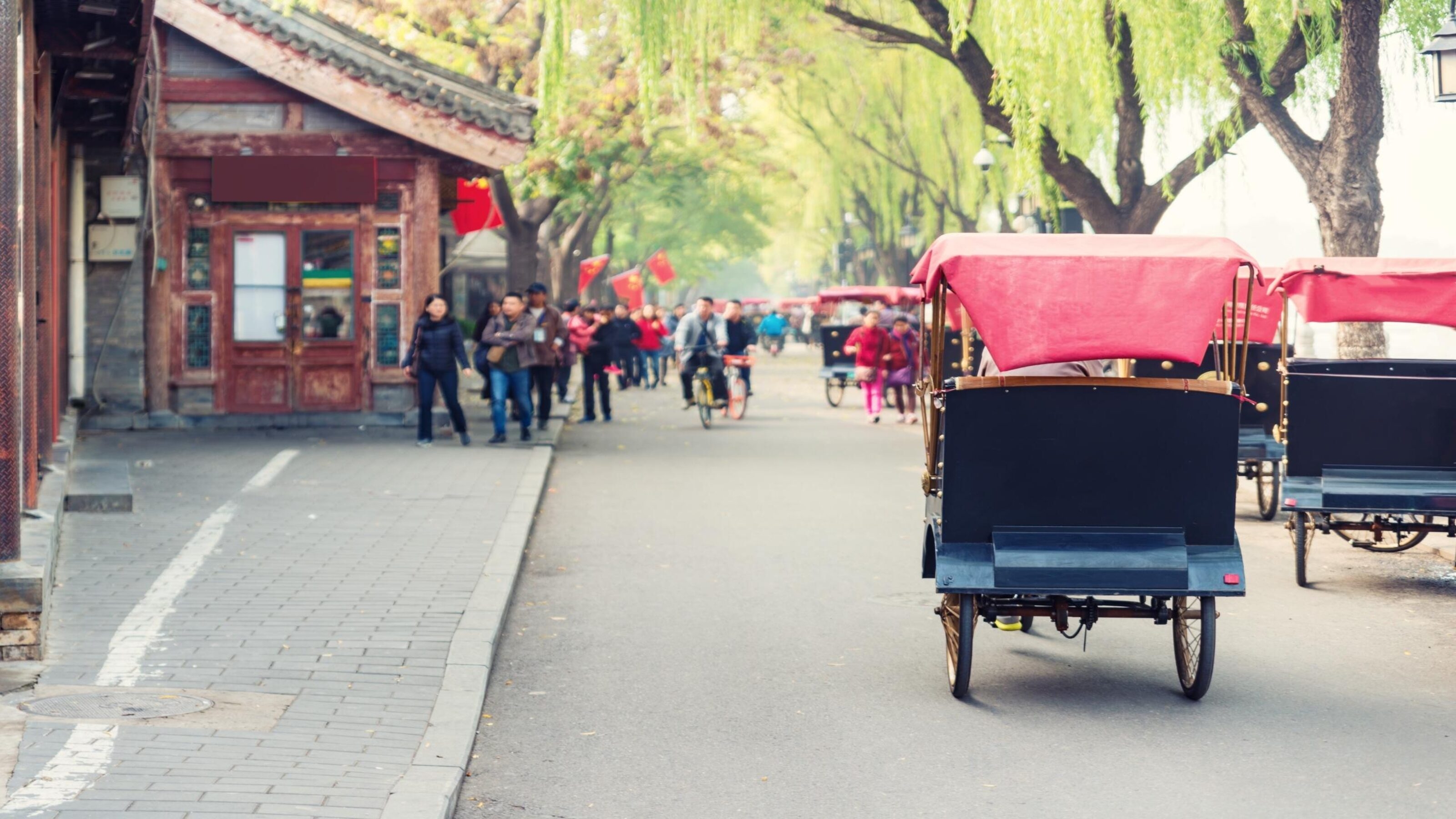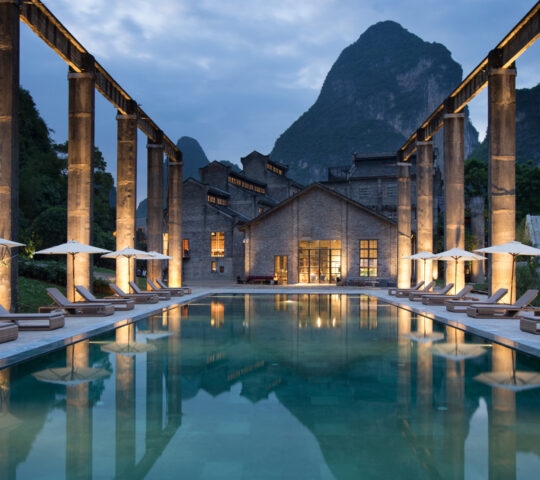A Family Adventure in China
China is a wonderful destination for families – it has vibrant cities, sprawling palaces, jaw-dropping countryside, a fascinating history and, of course, those adorable pandas that call this place home. Discover them all on this 13-day trip.
Trip highlights
- Step inside Beijing's historic Forbidden City
- Drift along the Yulong River on a bamboo raft
- Visit The Great Wall of China
- See the 2,000 unique Terracotta Warriors
- Try making authentic Chinese dumplings
- See giant pandas up close
Our bespoke trips include
We design one-of-a-kind journeys incorporating luxury in all its forms. Our bespoke trips include:
- Luxury accommodation throughout
- Privately guided tours
- Private transfers
- Meticulously selected experiences
- Expertise and support from your Jacada Concierge

Itinerary in detail
Every Jacada trip is tailored to your personal preferences and interests. Below you’ll find a sample itinerary to inspire your own custom-designed journey.
Days 1–4
Welcome to Beijing
Your discovery starts in the capital, Beijing.
Step inside the Forbidden City, a massive imperial palace once home to China’s emperors and the geographic center of this endless metropolis. The gates were shut to all but the royal household and their entourage of eunuchs and concubines for 600 years until, in 1924, a powerful warlord gave the last emperor just three hours to leave. Beyond the imposing red walls to the south lies Tiananmen Square, where, Chairman Mao, China’s most powerful ruler lies embalmed in a glass coffin within his own giant mausoleum.
You’ll also explore Beijing’s ancient hutong alleyways, the crisscrossing mazes of courtyards and alleyways which make up the heart of the city. You’ll see elders whiling away the night with a game of Chinese chess or mahjong and shopkeepers selling traditional snacks like jianbing (pancakes) and baozi (steamed buns). It is in these neighborhoods where the capital’s distinct culture was generated and where it continues to thrive today.
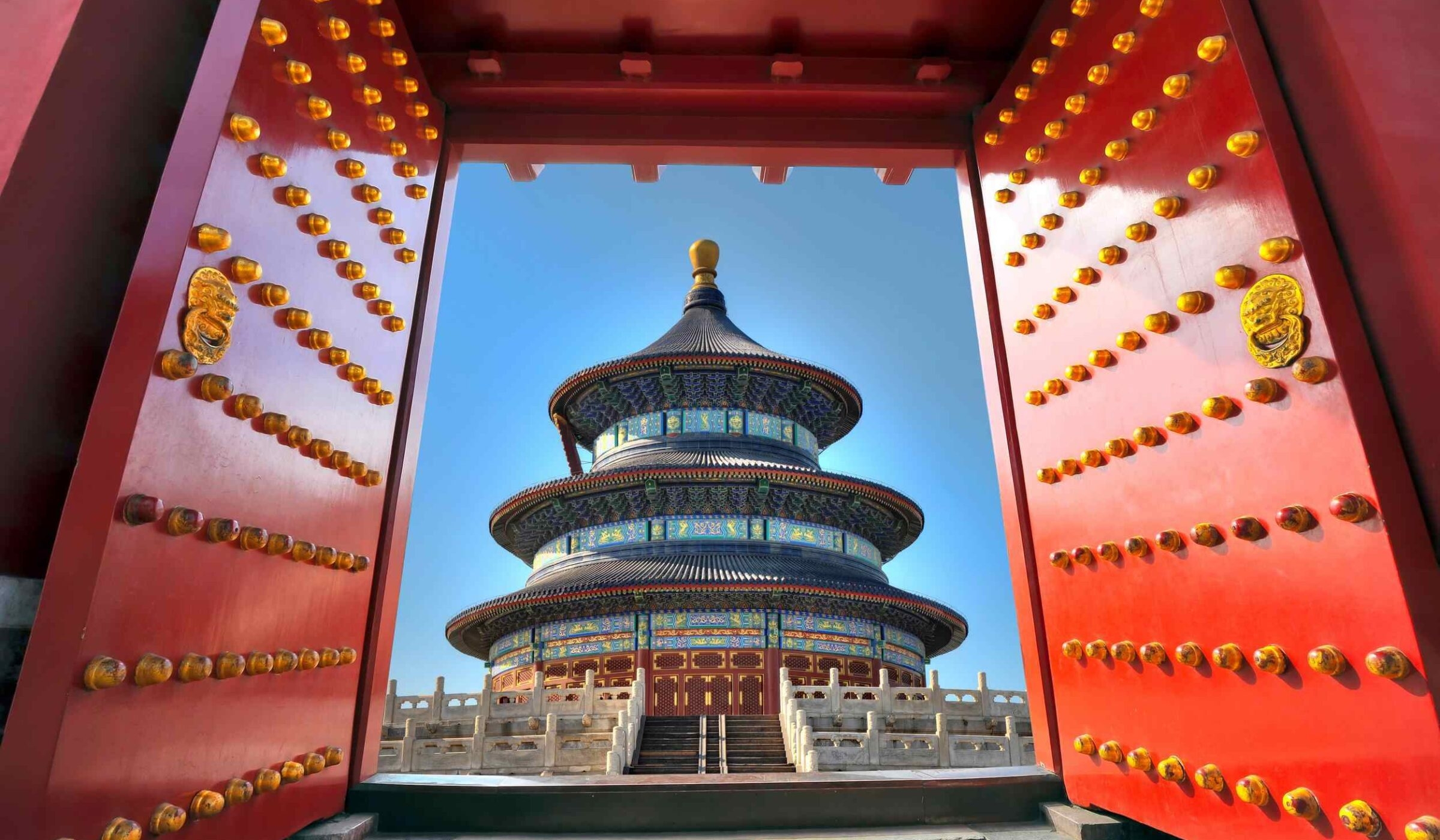
Where you could stay
The Great Wall of China

To visit one of the great wonders of the world, the Great Wall, you’ll head to the Mutianyu section, located in Huairou County a short way outside of Beijing. This section of the wall enjoys a special significance as it connects Juyongguan Pass in the west with the Gubeikou Great Wall in the east and was first built in the Northern Qi Dynasty between approximately 550 to 557 AD. You’ll be accompanied by a historian who will give you insight into the fascinating creation of the Wall and bring to life the sheer scale and human effort that went into creating it.
Days 4–6
On to see the warriors in Xi’an
Your next stop is Xi’an where you’ll find the awe-inspiring Terracotta Army. The grand mausoleum of Qin Shi Huangdi houses this immense army of infantry men, archers and cavalry riders to protect him in the afterlife, and every one of these statues is unique.
While you’re here, you’ll also marvel at the Xi’an city wall. Ascending to an imperious height of 12 metres, this is the oldest, largest and best-preserved city wall in China. The only way in or out of downtown Xi’an is to pass through its cavernous openings, but the best way to experience the fortifications is by walking on top of them.

See the city
History
Gastronomy

The Muslim Quarter
As Islam flowed along the Silk Road into China 1,300 years ago, its followers, both local and foreign alike, settled in a busy commercial area of the capital, Chang’an. After centuries of prosperity, the very same Muslim Quarter is still one of the most bustling areas of modern-day Xi’an, and a sensory feast of neon signs, exotic spices, and barbecued fare.

Chinese dumpling tasting
Xi’an claims to be the birthplace of Chinese dumplings, and whether or not that’s true, local chefs have elevated the humble staple to the most sophisticated culinary heights. Head to Xi’an’s most popular dumpling joint where these little hand-pinched dough parcels of ground meat and vegetables are crafted into all shapes and sizes, and have a go yourself at making everybody’s favorite Chinese snack.
The Terracotta Warriors

In 1974, a few farmers stumbled upon the warriors by accident, a mistaken discovery that ended up being one of the greatest archeological finds in history. Inspired into creation thanks to Qin Shi Huangdi’s fear of malevolent spirits, this grand mausoleum houses the emperor’s immense army of infantry men, archers and cavalry riders to protect him in the afterlife. Each of the warriors has a different face from a soldier during the Emperor’s life. The statues are viewable in three separate areas. Pit number one is the most impressive, with about 2,000 warriors.
Days 6–9
Meeting the pandas in Chengdu
You are never too young or old to marvel at nature, and both children and adults alike will be sure to enjoy their time in Chengdu.
In the city, wander the Kuan Zhai alleyways to see a dynamic collision of traditional architecture and modern culture, where Qing Dynasty buildings play host to some of Chengdu’s best coffee shops, bars, galleries and boutiques. Rub shoulders with locals who love to roam these quirky lanes on their day off and tuck into some of the city’s traditional snacks.
Next, it’s on to the Dujiangyan Panda Base, where you’ll spot the adorable and rare giant panda.

Where you could stay
The best of Chengdu
Wildlife
Spice

Dujiangyan Panda Base
Located about 1.5hrs outside Chengdu, the Dujiangyan Panda Base is the perfect place to get up close to giant pandas. The first wild pandas were first spotted in this area in 1953 and the bamboo-covered hills of the conservation centre replicate the iconic animal’s natural habitat. The ultimate goal of the Dujiangyan Panda Base is to boost the population and prepare the pandas for life in the wild. Be sure to look out for the keepers, who may well be hanging out with China’s national animal dressed as pandas themselves.

Sichuan Culinary Museum
The mere mention of Sichuan to people from any other province is enough to see them quiver at the thought of their country’s fieriest food, but there is more to Sichuan cuisine than just heat. At the Sichuan Culinary Museum, you’ll learn to differentiate the peppery ma from the spicy la, and have a go yourself at cooking and serving some of the region’s favourite dishes, all under the guidance of a professional chef.
Days 9–11
Amid karst peaks and rice paddies
Next up is the beautiful Yangshuo region, characterised by towering karst peaks and lush green rice paddies. The best way to appreciate this scenery is to get out and about.
Start by hiking a flat, picturesque routealong the Yulong River, where the beautiful scenery will give you an intimate impression of the most widely romanticized landscape in China, immortalised in countless cultural references and ink-brush paintings.
Then, step aboard a bamboo raft, truly entering the canvas of an ancient Chinese painting. Your very own gondolier will punt you along crystal waters meandering through this surreal landscape of karst peaks and lush foliage. Spot water buffalo periodically ploughing the fields beside the riverbank before stopping to dine with a local family to really get an insight into the rural way of life here.
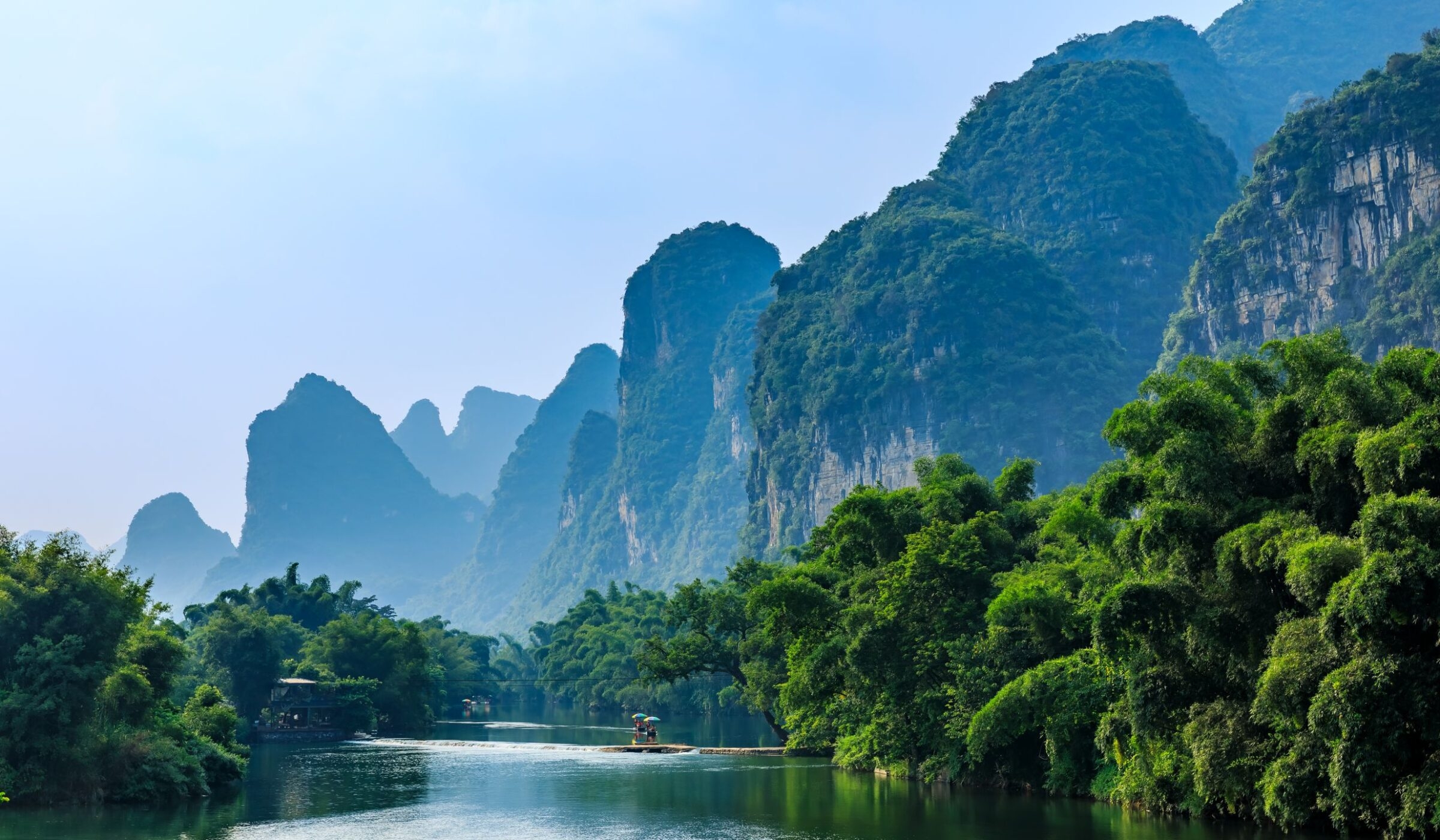
Beyond the river
Hiking
Shopping
Painting
Sightseeing
Fishing

Pomelo forest hike
Hiking is the best way to access the dream-like landscape of Guangxi, a world of karst peaks and ponderous rivers immortalized in centuries of poems and ink brush paintings. So lace up your walking shoes and step into the Pomelo forest, a delightful one-hour trail that cuts through a rich vein of Yangshuo countryside. The path is mostly flat so you can focus on the sights rather than the strain, or push on for another hour to reach the shores of a nearby reservoir.

Yangshuo's city market
Snake through the makeshift maze of shops in Yangshuo’s bustling city market. The market is split into two main rooms: in the first, you’ll see vendors selling fresh produce and some dry goods from tarps or newspaper spread out on the ground. In the second, stroll down rows of vendors selling meat, prepared and semi-prepared food, and produce from stalls and carts

A Chinese landscape painting class
The ancient art of Chinese landscape painting has long focused on man’s insignificance in nature, and countless scrolls depict tiny human figures dwarfed by the sublime scenery of mountains and rivers. For an hour and a half, put brush to canvas and study the underlying philosophy of landscape painting with a local artist.

Fuli village
Embedded in the glorious Guangxi countryside and surrounded by karst hills, the village of Fuli offers more than just traditional rural charm. Fuli is the ancient hometown of the paper fan, and even today many of the locals still make their living with this time-honoured craft, so peruse their exquisite wares and have a go at crafting one yourself in this atmospheric and historical setting.
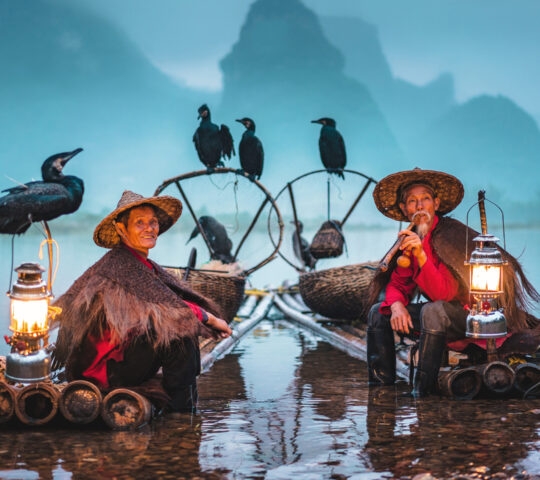
Meeting Yangshuo's fishermen
With its rural population and traditional ways of life, Guangxi province abounds with examples of humans existing harmoniously with nature, but there is no better illustration than the Yangshuo fishermen who enlist the help of their feathered friends to make ends meet. At dusk head out onto the river for a two-hour excursion in the boat of one of these ancient masters and get hands on as they use cormorants to pull fish from the inky waters below.
Days 11–13
City life in Shanghai
Your final stop on this epic adventure is Shanghai. Although this is a fast-paced and cosmopolitan city, there are plenty of traditional districts and historic landmarks to discover. It’s the perfect place to end your trip.
During your time here, you’ll explore Fuxing Park, a vestige of the French colonial era that’s now the beating heart of Shanghai’s local life, and the charming former French concession on guided tours. Dine amid the restored facades of Xintiandi at international restaurants, cafes, and bars – and don’t miss the Yuyuan Garden, a postcard example of a more traditional side to the country, the beautifully manicured gardens, punctuated with rocks and trees.

